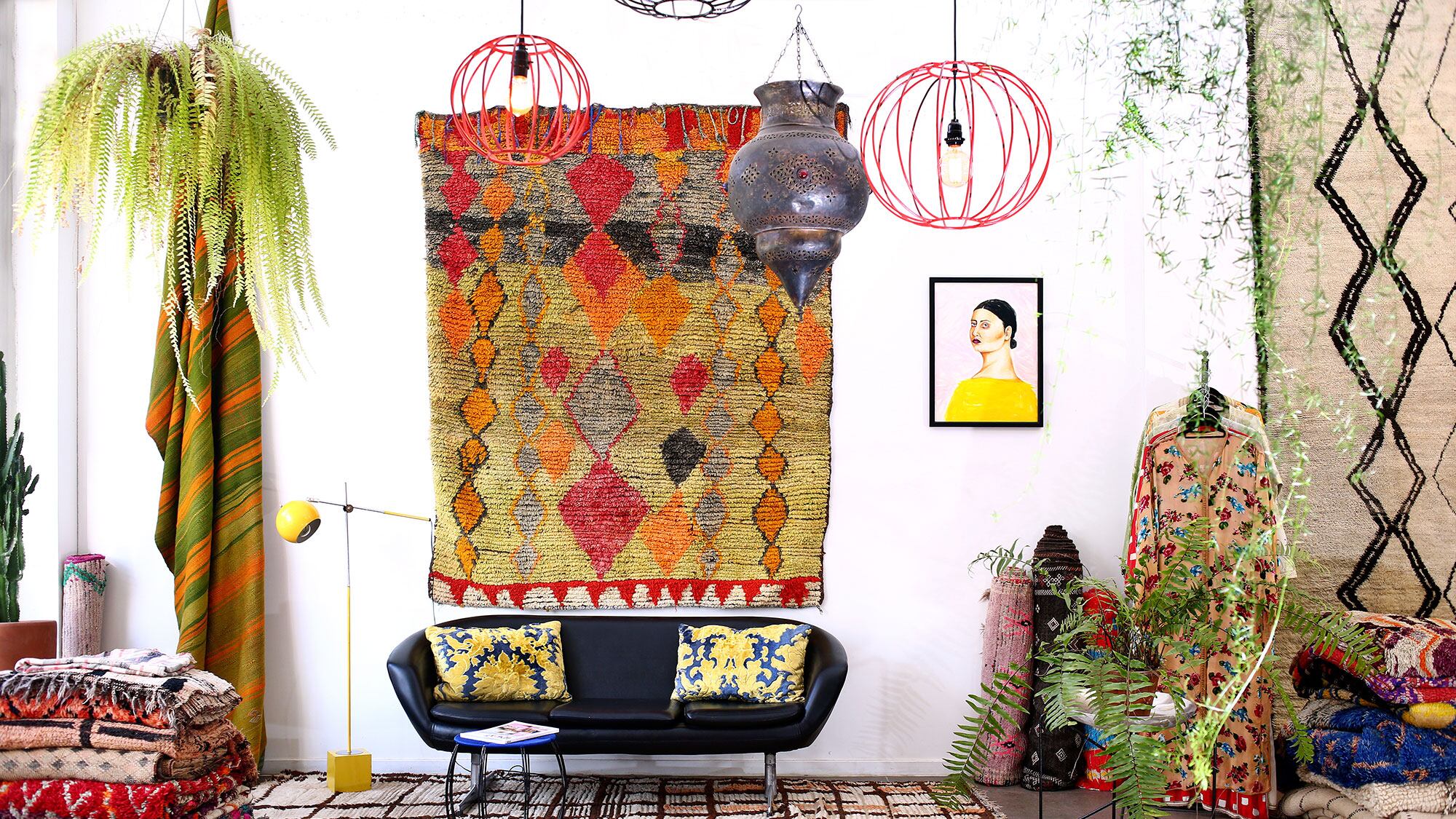In a city that has fallen hard for minimalism and monochrome in the past few years, Portland shoppers take note when they see saturated colors and prints inside a shop window.
If you stroll just past the Old Town/Chinatown gates and look to your left, you will be stunned by piles of brilliantly colored and textured rugs. The store is Kat + Maouche. Owned by husband-and-wife team Katen Bush and Latif Bezzir, the merchandise is inspired by the time the two spent in Algeria collecting textiles, and Bezzir's Berber heritage.
The couple met in San Francisco as Bush was earning a Ph.D. in political science at Berkeley. In 2008, after three years in Algeria, they moved back to Portland, where Bush had grown up, and opened a pop-up shop just one store away from where they are now.
"I decided I did not want to start a dissertation," Bush says. "I have a rug store, instead of a dissertation, for Berber culture."
Since returning to the States, Bush and Bezzir return frequently to Morocco, bringing back the distinctive rugs that make up their inventory. WW met up with Katen to discuss introducing a blast of color to gray Portland.
WW: Why rugs?
Katen Bush: At first, we brought quite a few things and set a big container. It wasn't all rugs, by any means. I hadn't thought through what people would buy or would not buy, and when we opened the pop-up, people started buying the rugs, and I was like, "Oh my God. That works."
Explain the importance of color to Berber and North African culture.
Latif's family comes from a mountainous area in Algiers where everyone was sedentary. So they're not doing the pile rugs, whereas a lot of Moroccan tribes were semi-nomadic so they're doing pile rugs to sleep in and tents for when it's cold. There are ties across the culture, and there are tons of regional variations. Color is considered to fend off the evil eye, and you're dealing with fairly stark landscapes, so there's this contrast of stark, kind of harsh landscapes, and then homes painted bright orange and blue. Color is very important and is part of the visual language of most Berber areas.
Can you speak on Portland consumers' relationship to color in terms of design?
Something I have to say I'm so grateful to Portland for is that there are some wonderful interior designers in Portland. They've been key for us in translating a lot of things that are wacky about Berber rugs, the colors being one of them. People need a little reassurance sometimes. People often ask about "the rules," and I'm the wrong person to ask. And it's a commitment. Furniture and rugs are not just, "I'm going to play around." They're big purchases, and I'm hoping people keep these rugs for a very long time. People need a little hand-holding sometimes.
What do colors and textures say about the person choosing them or the space they are embellishing?
The most interesting thing is that people are often drawn to things that surprise them. There's such a variety, and they really run the gamut. I always ask people when they come in about dimension, if there are colors they're thinking about, and then on a scale from funky-bohemian to sophisticated, where they would fall. I think people overestimate how neutral they want to go. They'll tell me, I'll be pulling rugs and then they spot a crazy one in the pile. At first, it's just curiosity, you pull it out, and then they start going in that direction. They just do. We're drawn to more color than we think.
What can people do within their homes or lives to get more comfortable and experiment with color more?
I can answer this as a clotheshorse who often advises friends on clothing purchases. If you really like something and it's always like, "Well, can I wear it?" Of course you can. Why couldn't you? You just wear it the next day, and it's integrated into your wardrobe. People just often need to get over the hump. We have so many ideas of who we are and what we like. If you're drawn to something, make it work!
SHOP: Kat + Maouche, 33 NW 4th Ave., 206-612-5271, katandmaouche.com. 11 am-6 pm Tuesday-Saturday or by appointment.

